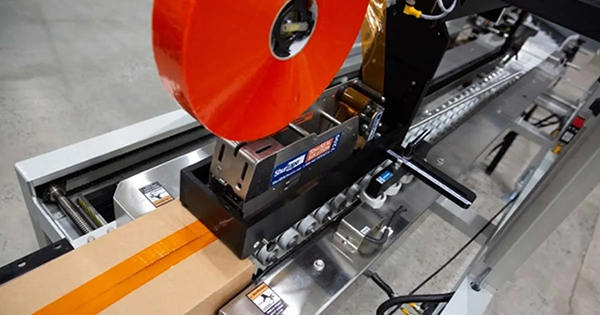Developing systematic, cost-effective packaging and shipping processes that ensure products leaving your facility arrive safely and securely at a consumer’s doorstep is no simple task.
By some estimates, a single package can be subjected to 20-plus touchpoints on the journey to its destination in the e-commerce, direct-to-consumer (DTC) supply chain. This expands the potential for packaging failures, damaged goods and open returns. With businesses increasingly relying on direct fulfillment centers (DFCs) to meet the skyrocketing demands, its critical to gain throughput efficiency and ensure secure packaging while maintaining profitable margins. That means every decision, from evaluating carrier rates to selecting packaging materials, has the potential to make or break your bottom line.
In the fast-paced DFC environment, something as simple as a packaging tape failure or an unsecure carton seal can lead to production inefficiencies, product damage, loss, or theft and, ultimately, a disappointed or aggravated customer. But by paying close attention to the three tips listed below, you’ll be better positioned to boost packaging line efficiencies, avoid costly downtime and properly secure your parcels without sacrificing your budget or reputation in the process.
Tip 1: Choose the Right Tape for Automated Case Sealing
The best way to avoid tape failures is to make sure you are using the appropriate tape for the job in the first place. Rightsizing involves taking a close look at your packaging operation and, in turn, selecting the right tape grade for the application at hand. By considering variables like carton size, weight and even your case sealing environment, you’ll be better suited to select the right grade and gauge tape.
Pressure-sensitive packaging tapes fall into two main categories: acrylic and hot melt. While both are versatile tapes that adhere well to a variety of packaging material surfaces, hot melt tapes offer higher performance in automated applications and more durability to withstand the demands of single parcel shipments.
Within the hot-melt packaging tape category, there are two main tiers that can be used for automated case sealing: production grade and heavy duty grade. Both grades are engineered with an aggressive, high-tack adhesive and superior holding power to keep carton seals intact, but they’re designed for different packaging and shipping environments. Production grade packaging tapes, which measure 1.8 to 2.0 mils in thickness will suffice for packages with minimal exposure to handling, shipping and load stress. Heavy duty packaging tapes, which are more robust at 3 mils or greater, are specifically engineered for large, heavy packages—including overstuffed or under-filled cartons—in high-touch, demanding shipment methods.
Tip 2: Identify Opportunities for Packaging Automation
With a reliable workforce being one of the most significant pain points in the packaging and shipping industry today, there’s no overstating the value that an automated packaging operation can offer in the DFC environment.
Automated case sealing systems offer valuable efficiencies that lessen the demand for manual labor while increasing output. Automated solutions also create consistency in case seal integrity and tape tab lengths, limit waste—all of which improves the reliability and profitability of your case sealing operation.
Not sure if a fully automated approach is warranted for your business? Ask your case sealing solutions provider how you can enhance the efficiency of your packaging processes with a semi-automated approach that streamlines specific tasks while maintaining the manual processes that are essential to your unique packaging operation.
Tip 3: Eliminate Downtime in the Supply Chain
Simply put, there’s no time for downtime in high-volume direct fulfillment center operations. So, while rightsizing your tape and identifying opportunities for automation are positive steps toward enhancing efficiencies, the benefits of these changes are best realized when they’re paired with a commitment to reducing downtime within your operation.
Whether it’s downtime caused by unexpected issues like untaped cases, breaks in the tape and case jams, or predictable slow-downs like tape roll changeovers, any scenario that brings your operation to a halt is going to come at the expense of your bottom line.
While there’s no way to guarantee that these types of machinery faults won’t occur, you can mitigate the effect they have on your operation by implementing a tape management system that’s capable of visibly or audibly alerting line operators or maintenance personal in real time when they do. This will allow your team to address problems immediately, before they get too out of hand.
Learn more at rhbopptape.com
Post time: Jun-12-2023






